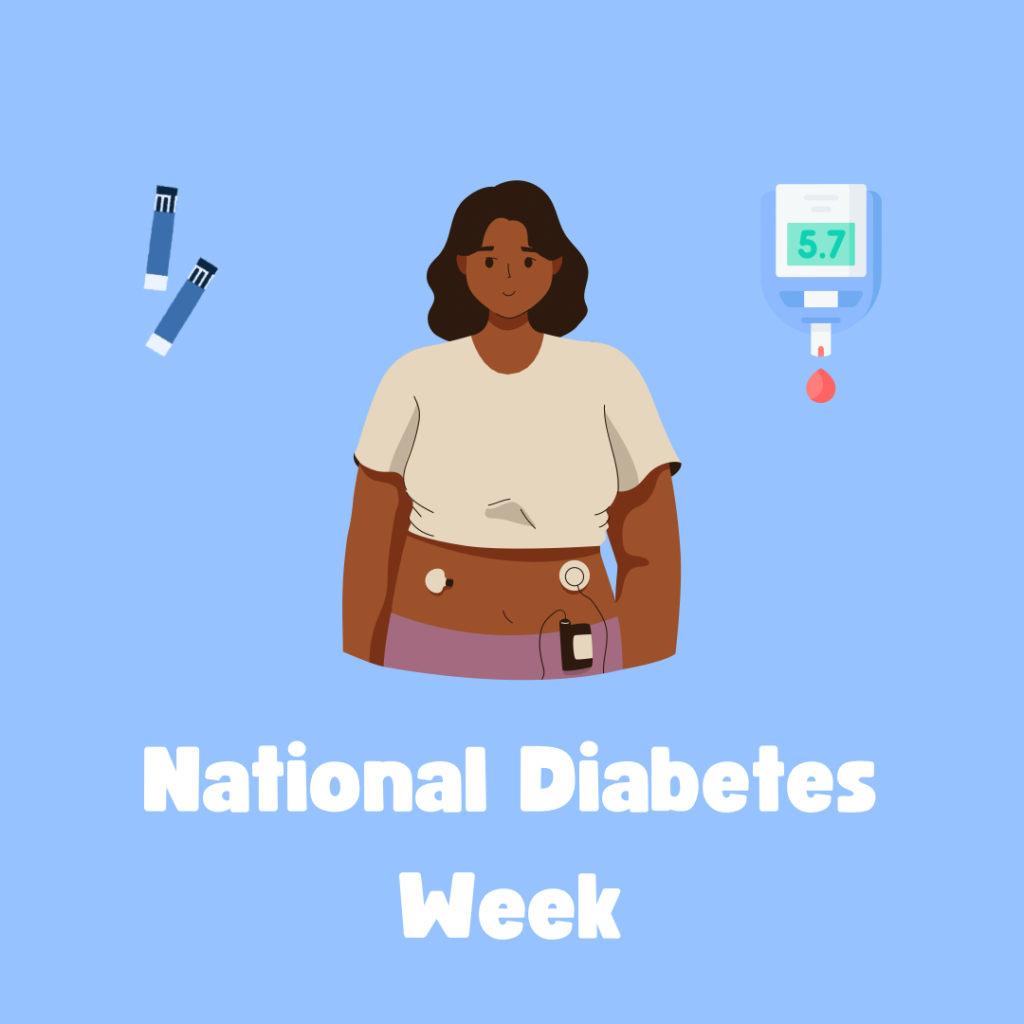It is National Diabetes Week! Sugar is a common part of our diet, commonly found in fruit and vegetables, honey, milk and wheat, naturally, and additional sugar is often added to juice, baked goods, ice cream, soft drinks and lollies. The World Health Organisation recommends adults limit themselves to 12 teaspoons or 50 grams of natural or added sugar per day.
Sugar plays an important part in keeping our body moving.

What does sugar do for our bodies?
Our bodies mostly use a form of sugar known as glucose as our primary source of energy. Our bodies take sugar from the different foods we eat (especially carbohydrates) and turn it into glucose so we can use it as energy. This is the energy we need to do every task: from moving our muscles, to breathing, to forming a thought.
What happens when we can’t store sugar properly?
People with diabetes do not produce enough insulin or the insulin they do make is not used effectively within the body. Insulin is a hormone which is responsible for the movement of glucose from the blood into our cells. When this doesn’t happen as it should, there is an excess of glucose left in our blood.
The most immediate effects of high blood sugar levels (hyperglycaemia) that we notice are tiredness, dehydration and increased thirst.
Over time, the effects of high blood sugar become more serious as damage can be caused to our blood vessels and nerves which supply our heart, brain, kidneys, eyes and feet. Symptoms can include: increased hunger, urinating more, blurred vision, increased healing time for cuts and scrapes, more frequent infections, changes in weight, headaches, dizziness, leg cramps and mood swings.
What can we do to prevent diabetes?
There are 3 types of diabetes:
- Type 1: an autoimmune condition often starting in early childhood where the pancreas does not produce any (or enough) insulin.
- Type 2: often occurs later in life due to a variety of genetic and lifestyle factors, and involves the body becoming resistant the the effects of insulin and often leads to a reduced production of insulin.
- Gestational: occurs during pregnancy.
Diabetes can effect anyone, however, there are some lifestyle factors which can be altered to reduce your risk.
While Type 1 Diabetes cannot be prevented, reduce your risk of developing Type 2 Diabetes by:
- Eating a healthy, balanced diet which includes a variety of vegetables, legumes, fruits, whole grains, meats and dairy products.
- Being physically active.
- Not taking up smoking, or quitting/reducing cigarette consumption.
- Maintaining a healthy weight.
- Managing your blood pressure and cholesterol levels.
Book an appointment with our Chiropractor, Massage Therapist or Naturopath here or call us on 9651 5559.
Find more of our health tips here.
Sources:
Diabetes Australia. What is diabetes. https://www.diabetesaustralia.com.au/about-diabetes/what-is-diabetes/
Diabetes Australia. Type 2 diabetes. https://www.diabetesaustralia.com.au/about-diabetes/type-2-diabetes/
Health Direct. Sugar. https://www.healthdirect.gov.au/sugar
